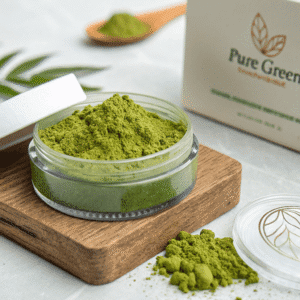Few desserts are as universally loved as ice cream. Whether it’s a simple scoop of vanilla or an elaborate sundae loaded with toppings, this frozen treat has a special place in our hearts and freezers. In this comprehensive guide, we’ll explore the fascinating history of ice cream, the many varieties available, how to make your own at home, and some fun facts that will make you appreciate it even more. So, grab a spoon, and let’s dive into the world of frozen delights!
The History of Ice Cream: A Journey Through Time
The origins of ice cream can be traced back thousands of years. While the exact beginnings are debated, it’s widely believed that the concept of chilled desserts dates back to ancient civilizations. Here’s a brief timeline of how these treats evolved into the creamy confections we enjoy today:
- Ancient Beginnings (2000 BC – 500 AD):
The earliest forms of frozen desserts were likely created in China, where people mixed snow with honey and fruit. Similarly, the Persians enjoyed a frozen delicacy made from rosewater, vermicelli, and saffron, reserved for royalty. - The Roman Empire (27 BC – 476 AD):
Roman emperors sent runners to the mountains to collect snow, which was then flavored with fruits and juices. This luxurious treat was a privilege of the elite. - The Middle Ages (5th – 15th Century):
Arab traders introduced sugar to Europe, revolutionizing the way frozen desserts were made. The concept of mixing ice with sweeteners and flavors began to spread across the continent. - The Renaissance (14th – 17th Century):
Ice cream as we know it started to take shape in Italy, where chefs experimented with milk, cream, and sugar. Catherine de’ Medici is credited with bringing these treats to France when she married King Henry II in 1533. - The 18th and 19th Centuries:
Frozen desserts became more accessible to the general public. The invention of the hand-cranked churn in the 1840s made it easier to produce at home. By the late 19th century, ice cream parlors began popping up in cities across Europe and America. - The Modern Era (20th Century – Present):
The 20th century saw the rise of commercial production, with brands like Häagen-Dazs, Ben & Jerry’s, and Baskin-Robbins becoming household names. Today, the ice cream industry is worth billions, with countless flavors and variations available worldwide.
Types of Frozen Treats: Exploring the Delicious Varieties
Frozen desserts come in many forms, each with its own unique texture, flavor, and preparation method. Here are some of the most popular types:
- Traditional Ice Cream:
Made with milk, cream, sugar, and flavorings, this classic treat is churned to incorporate air, giving it a smooth and creamy texture. It’s the most common type found in grocery stores and shops. - Gelato:
Originating from Italy, gelato is denser and richer than traditional ice cream. It contains less air and more milk than cream, resulting in a more intense flavor. - Sorbet:
A dairy-free option, sorbet is made from fruit puree, sugar, and water. It’s light, refreshing, and perfect for those who are lactose intolerant or vegan. - Sherbet:
Similar to sorbet, sherbet contains a small amount of dairy, giving it a creamier texture. It’s often fruit-flavored and has a slightly tangy taste. - Frozen Yogurt:
Made with yogurt instead of cream, this option is a healthier alternative to ice cream. It’s often lower in fat and calories but still offers a creamy texture. - Soft Serve:
Soft serve is a lighter and airier version of ice cream, typically served at a slightly warmer temperature. It’s a popular choice at fast-food restaurants and trucks. - No-Churn Desserts:
These are made without a churner. They’re typically made with sweetened condensed milk and whipped cream, making them easy to prepare at home. - Vegan Options:
With the rise of plant-based diets, vegan ice cream has become increasingly popular. It’s made with non-dairy milk alternatives like almond, coconut, or oat milk. - Artisanal Creations:
Handcrafted in small batches, these treats often use high-quality, locally sourced ingredients. They’re known for their unique and creative flavors. - Kulfi:
A traditional Indian frozen dessert, kulfi is denser and creamier than regular ice cream. It’s often flavored with cardamom, saffron, or pistachios.
How to Make Homemade Ice Cream: A Step-by-Step Guide
Making your own ice cream at home is easier than you might think, and it allows you to customize flavors to your liking. Here’s a simple recipe to get you started:
Ingredients:
- 2 cups heavy cream
- 1 cup whole milk
- 3/4 cup granulated sugar
- 1 tablespoon pure vanilla extract
- Pinch of salt
Instructions:
- Mix the Ingredients:
In a large bowl, whisk together the heavy cream, milk, sugar, vanilla extract, and salt until the sugar is fully dissolved. - Chill the Mixture:
Cover the bowl with plastic wrap and refrigerate for at least 2 hours, or until the mixture is thoroughly chilled. - Churn the Ice Cream:
Pour the chilled mixture into a churner and follow the manufacturer’s instructions. This usually takes about 20-30 minutes. - Freeze:
Transfer the churned mixture to a lidded container and freeze for at least 4 hours, or until firm. - Serve and Enjoy:
Scoop your homemade ice cream into bowls or cones, and add your favorite toppings!
Fun Facts About Frozen Desserts
- The Most Popular Flavor:
Vanilla is the most popular ice cream flavor worldwide, accounting for about 30% of all sales. - The Largest Scoop:
The record for the largest scoop was set in 2014 in Italy, weighing over 3,000 pounds. - Desserts in Space:
Astronauts have enjoyed freeze-dried versions in space, but they’re not as creamy as the real thing. - National Dessert Day:
In the United States, National Ice Cream Day is celebrated on the third Sunday of July. - The Cone’s Origin:
The ice cream cone was popularized at the 1904 World’s Fair in St. Louis, Missouri. - Brain Freeze:
The scientific term for brain freeze is “sphenopalatine ganglioneuralgia.” - Desserts for Breakfast:
In Japan, it’s common to eat frozen treats for breakfast, with flavors like miso and seaweed. - The Most Expensive Dessert:
The most expensive version in the world is “Byakuya,” a Japanese creation made with gold leaf and rare ingredients, costing over $800 per serving. - Consumption Stats:
The United States is the largest consumer of ice cream, with the average American eating about 23 pounds per year. - Happiness Boost:
Eating frozen desserts releases serotonin, a hormone that boosts mood and promotes feelings of happiness.
The Health Benefits of Ice Cream
While often considered a treat, these desserts do offer some health benefits when consumed in moderation:
- Calcium and Protein:
Versions made with milk and cream are good sources of calcium and protein, essential for strong bones and muscles. - Energy Boost:
The sugar and fat provide a quick source of energy, making them a great snack after physical activity. - Mood Enhancer:
As mentioned earlier, they can boost serotonin levels, helping to reduce stress and improve mood. - Vitamins and Minerals:
Depending on the ingredients, they can contain vitamins like A, B, and D, as well as minerals like phosphorus and potassium.
Celebrating the Joy of Ice Cream
Ice cream is more than just a sweet treat; it’s a symbol of joy, celebration, and togetherness. Whether you’re enjoying a classic cone, experimenting with homemade recipes, or exploring unique flavors from around the world, there’s no denying its universal appeal. So, the next time you indulge in ice cream, take a moment to appreciate its rich history, diverse varieties, and the simple pleasure it brings to our lives.



